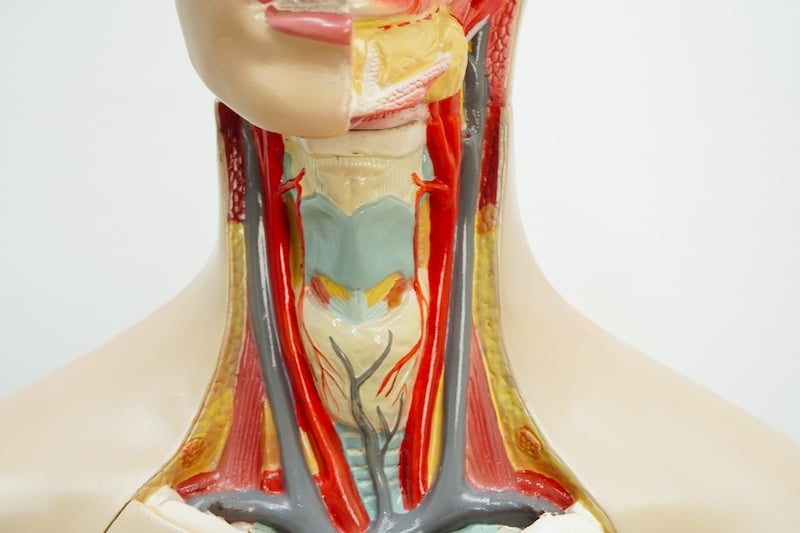Summary:
Researchers from the University of Turku have developed a novel LIMA1-alpha immunohistochemical assay that can accurately identify head and neck cancer patients who can be cured with surgery alone, potentially eliminating the need for harmful additional treatments.
Takeaways:
- Predictive Power: High LIMA1-alpha expression correlates with poor surgical outcomes, while LIMA1-negative patients showed excellent survival without additional therapy.
- Clinical Utility: The assay outperforms current biomarkers and offers a cost-effective method for stratifying early-stage head and neck cancer treatment.
- Commercial Pathway: A start-up, Thestra Oy, has been launched to bring the EPLINEx test to clinical use, marking a significant step toward personalized, less toxic cancer care.
Researchers from the University of Turku and Turku University Hospital, Finland, led by Docent Sami Ventelä and Professor Jukka Westermarck, have identified a novel diagnostic tool that can revolutionize the treatment guidance of head and neck squamous cell carcinoma.
Their newly published study introduces an easy-to-use immunohistochemical assay for detecting the LIMA1-alpha protein, which reliably predicts whether patients can be cured with surgery alone—avoiding the need for harmful oncological treatments.
Surgery Remains Cornerstone of Treatment
Surgery remains a cornerstone in the treatment of solid tumors, including head and neck squamous cell carcinoma. However, there has been no clinically available method to distinguish patients who can safely avoid additional therapies such as radiation or chemotherapy. These treatments can cause substantial side effects, additional costs and reduce quality of life.
The research team’s main findings included analyzing patients with newly diagnosed head and neck squamous cell carcinoma at all five university hospitals in Finland in a prospective clinical study. They found that high expression of the LIMA1-alpha isoform predicted poor survival following surgery, while patients with LIMA1-negative tumors had excellent outcomes without requiring further therapy. Strikingly, none of the LIMA1-negative patients in the prospective validation cohorts died of head and neck squamous cell carcinoma during 2-year follow-up.
“Our findings suggest that immunohistochemical detection of LIMA1-alpha can serve as a reliable and cost-effective tool for identifying patients who could be cured with surgery only and thus spared from the burden of multimodal treatments,” says Docent Ventelä. “This kind of stratification is long overdue and needed in head and neck cancer care.”
LIMA1-Alpha Demonstrates Prognostic Power
Using antibodies specific to the LIMA1 isoforms, the researchers demonstrated the assay’s prognostic power across retrospective, population-validated tissue microarrays and two independent prospective cohorts. The results were consistent and robust, showing that LIMA1-alpha was the only biomarker to significantly predict poor outcomes in surgically treated patients.
In addition to clinical data, mechanistic studies revealed that LIMA1 drives epithelial–mesenchymal transition and enhances cancer invasiveness—providing a biological explanation for its link to poor prognosis.
Currently, only two biomarkers—p16 and PD-L1—are in widespread clinical use for head and neck squamous cell carcinoma , and both have serious limitations in stratifying treatment for early-stage disease. This new LIMA1-alpha assay represents the first clinically translatable biomarker for selecting patients who may benefit from surgery alone.
“We trust that this can mark a turning point in personalized head and neck cancer care,” says Docent Ventelä. “We envision that LIMA1 testing will be incorporated into routine diagnostic workflows in head and neck squamous cell carcinoma to guide treatment planning from the outset.”
Study Offers Promising Step Toward Less Toxic Treatment Strategies
The study offers a promising step toward more personalized and less toxic treatment strategies for patients suffering from head and neck cancer. The University of Turku has applied for patent protection for the findings and based on them, a cancer diagnostics start-up company, Thestra Oy (https://thestra.fi), has been founded, which aims to bring the test to patient use under the EPLINEx brand later this year.
The original research was funded by the Jane and Aatos Erkko Foundation, the Cancer Foundations, The Finnish Medical Foundation and Business Finland.
Featured Image: Manassanant Pamai | Dreamstime.com





